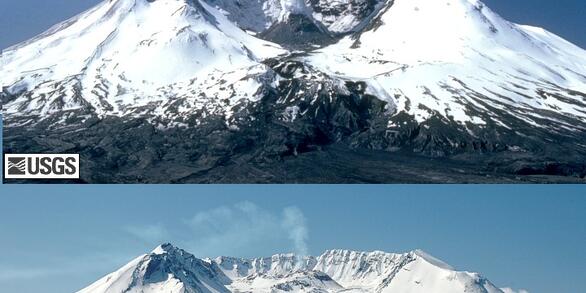Hazards
Volcanic hazards at Mount St. Helens.
Hazards Summary

Mount St. Helens' high frequency of eruptions during the recent geologic past and its two eruptive episodes of the past three decades indicate a high probability of renewed eruptive activity.
Future Eruptions at Mount St. Helens

We know that Mount St. Helens is the volcano in the Cascades most likely to erupt again in our lifetimes. It is likely that the types, frequencies, and magnitudes of past activity will be repeated in the future. However, neither a large debris avalanche nor a major lateral blast like those of May 18, 1980 is likely now that a deep crater has formed.










